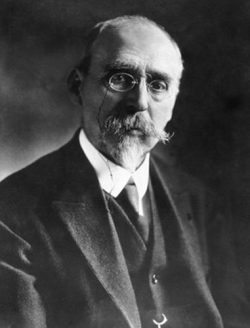The Law of 1905
The law of 9th December 1905, concerning the separation of the churches and the state, instituted and defined the secularity of France. It guaranteed freedom of worship in the spirit of the 1789 revolution, creating for it a legal framework and marking the end of the struggle between the lay Republic and the Catholic Church.
The premise of the law
The French Revolution had launched a movement of progressive secularisation of institutions. After the Restoration (1814 and 1830), and even more so after the 1848 revolution, the idea of separating the churches and the state was defended by many intellectuals and politicians, and came to prevail against the counter-revolutionary and anti-republican attitude of the Catholic Church. The pressure of the clerics was particularly strong during the period of the Ordre Moral, between 1873 and 1876. But the Dreyfus controversy that started in December 1894 marked a major political rupture in the relations between the Catholic Church and the Republic, while free thinking was developing. Its main effect was to speed up the separation process.
The 1901 law which guaranteed freedom of association also enabled the control of religious communities, and notably, to limit their influence on education. By 1904, it consequently legally forbade congregations to teach.
The drawing up of the law
The first draft of the law separating the churches and the state was drawn up in 1902. Among the Protestants, there was no unanimity concerning the separation, the Lutherans were rather hostile along with the liberals, whereas the orthodox, close to the “left-wing block”, were rather favourable or at least resigned.
In 1903 while Emile Combes was minister, a commission was set up “concerning the separation of the Churches and the State, and the denunciation of the Concordat.” Its president was the former Protestant pastor Ferdinand Buisson, and it’s minute writer, Aristide Briand.
Other Protestants actively contributed to the drawing up of the law, such as Eugène Réveillaud, a radical deputy, Raoul Allier, Francis de Pressensé, and above all, Louis Méjan. The latter worked with Aristide Briand in the writing of the draft.
They were thus able to influence the final wording so that it would allow the union of worship associations on the national level, which was denied in Emile Combes’ draft of 1904. After the demise of Combes’ ministry early in 1905, Maurice Rouvier, president of the Council of Ministers, submitted a new project close to that of the commission.
Debates about the law were especially long and passionate throughout the 48 sessions between March and July 1905. There were deputies opposed to the separation and those in favour of a very rigid separation for the churches. At the Senate, the debate lasted 21 sessions between November and early December 1905.
The contents of the law
The law followed on that of 1 July 1901, and had a similar double role, namely liberal : to create associations, and repressive : to outlaw those who would reject it, such as religious communities. The law of separation, the word only appears in the title, frequently sways between freedom and repression. It comprises 44 articles under six headings.
The first one set the principles : Article 1. The Republic ensures freedom of conscience. It guarantees freedom of worship limited only by the following rules in the interest of public order.
Then comes the essence of the separation : Article 2. The Republic neither acknowledges, nor pays for nor subsidises any form of worship. Consequently, from 1 January on, after the present law has been publicised, all spending related to worship will be eliminated from the budgets of the State and localities.
However, expenses related to chaplaincy and destined to assure the freedom of worship in public education, secondary and primary schools, homes, asylums and prisons, can be presented in the aforementioned budgets.
The rules of the 1801 Concordat and the Organic Articles of 1802 are thus annulled. Each church must look after its own financial support.
- Worship associations
The organisation of worship was based on the worship association each parish had to create, as well as each consistory – article 4. These associations were “exclusively concerned with worship” and had to comprise at least 25 adults domiciled or resident in the parish’s district, within localities of more than 20,000 inhabitants. They received membership fees, as well as gifts or legacies ; they had to hold a general assembly at least once a year, to examine and approve the accounts. Articles 18 to 24 detailed the obligations and the control over worship associations.
- Attribution of the church’s belongings
Articles 3 to 10 concerned articles belonging to the place of worship, who had to organise a double inventory to determine what belonged to the organisations – which would normally be attributed to the worship associations- and what belonged to the State or the communes.
Article 11 provided for the retirement pensions of ministers over 60 years of age and who were no longer paid, but also for widows’ pensions and allocations to their families.
- Buildings
Articles 12 to 17 dealt with the attribution of churches, manses, seminaries and theology faculties “made available to the Nation” by the Concordat and Organic Articles – after the planned inventory. These structures were made available to worship associations who had to maintain them. The most beautiful structures were declared “historical monuments” according to the 1887 law, and were maintained by the state and the communes ; a further classification was scheduled in Article 16.
- Worship organisation
This was detailed in Articles 25 to 36, and remains so today. Bell-ringing and processions were to be regulated by municipal decisions ; political meetings were forbidden in places used for worship ; religious education of six- to thirteen-year-olds must take place outside school hours ; any religious sign or emblem was forbidden on public monuments… There were fines for the offences, but also for threats to individuals to force them to join a worship association or to leave it.
The last articles dealt with general dispositions, including the abrogation of all previous laws and decrees : no longer was any form of worship acknowledged.
The implementation of the law
From 1906 onwards the councils of elders of Protestant churches formed worship associations. They became the owners of the Protestant temples, except for those considered historical monuments or those already owned by local churches outside the concordat regime. Such was the case for free churches already independent of the state.
On the whole the Protestants as well as the Jews approved of a law that put them on a par with the Catholics.
Pope Pie X condemned the law, and considered it a unilateral break from the 1801 Concordat. He forbade Catholics to set up worship associations. That was why most churches built before 1905 remained the property of the communes and most cathedrals the property of the state. Inventories of ecclesiastical belongings triggered resistance and even unrest that abated after 1908. Clémenceau calmed the situation by granting the Catholics their worship buildings for free.
The Orthodox church which did not exist in France in 1905, found its place in the law.
The 1905 law was not implemented in Alsace-Moselle, still under German rule in those days, and which kept its concordat regime even after it was returned to France. Neither did Guyanna, nor Saint-Pierre and Miquelon island, nor Mayotte – a Comoro island.
Today within the European Union, the 1905 law is a French peculiarity. In other countries the churches are not strictly limited to the domain of worship, but are also allowed to carry out social activities.
Progress in the tour
Bibliography
- Books
- BAUBEROT Jean, Laïcité 1905-2005, entre passion et raison, Le Seuil, Paris, 2004
- BOYER Alain, Le droit des religions en France, PUF, Paris, 1993
- BOYER Alain, La Loi de 1905, Olivétan, 2005
Associated tours
-
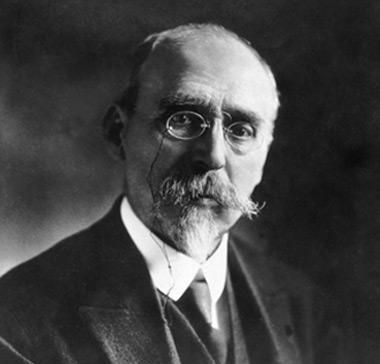
Protestantism in the XXth century
The law of 9th December 1905 separating the Churches from the State guaranteed the freedom of public worship for the Reformed Church and a legal framework. Hardly surprisingly, most Protestants...
Associated notes
-
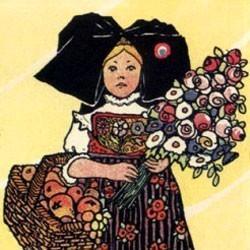
Alsace
Few French provinces have known as much distress as Alsace, suffering two annexations to the German Reich, and then twice reintegrated into France. The Protestant community took part in these... -
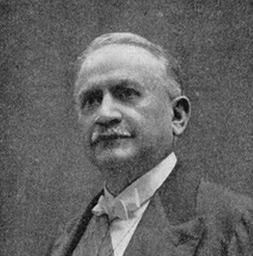
The First World War
The « sacred union » brought together all strands of Protestantism. Should the war not be short ? But the slaughter resulted in cruel deception, which many Christians perceived as failure, but would... -
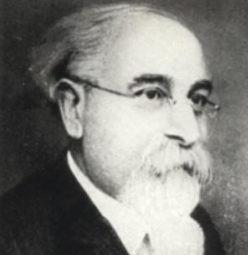
Between the Wars
France was victorious but devastated. Its illusions of power were at odds with the problems of compensation. Protestantism was split between traditional left-wing and new right-wing movements. However, the creation... -
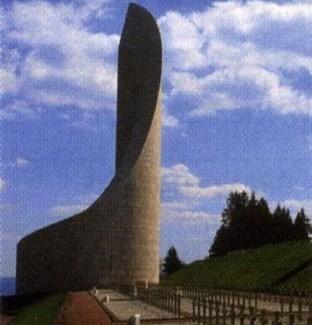
Alsace and World War II
The declaration of war led to the evacuation of one third of the population of Alsace : from Strasbourg and the border cities to the south-west of France, and the University... -
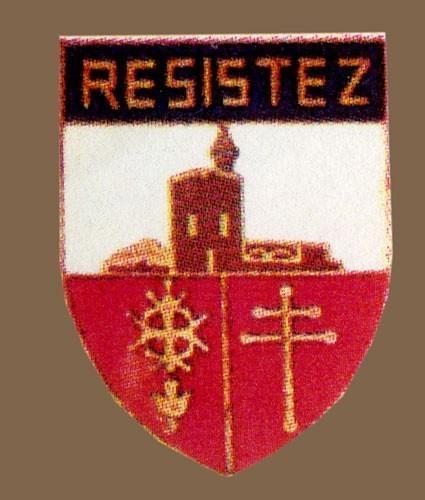
The Protestants during World War II
In June 1940 at the time of defeat, the attitude of the Protestants was similar to that of most of the French : they trusted Field Marshall Pétain. But the break...

